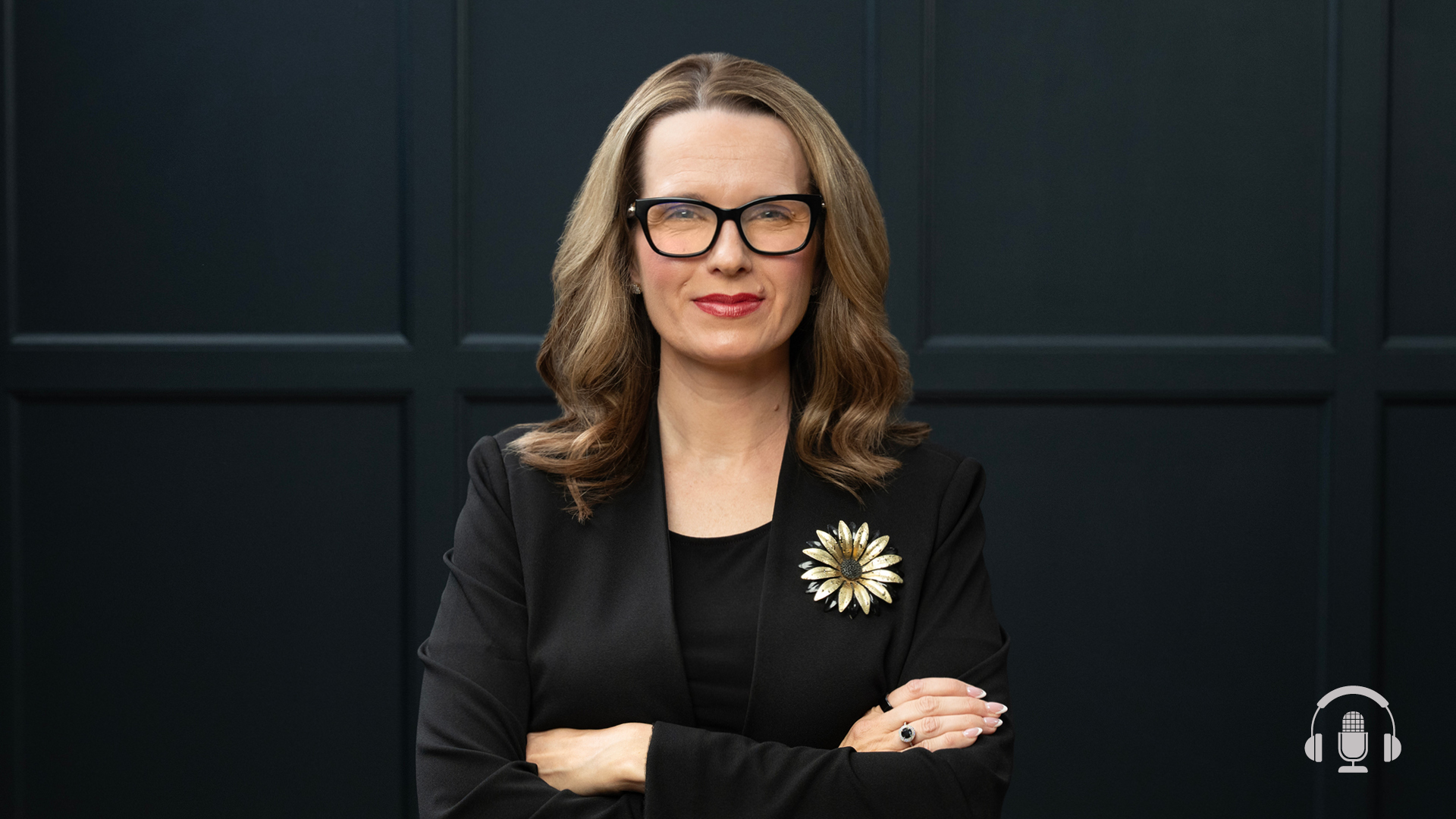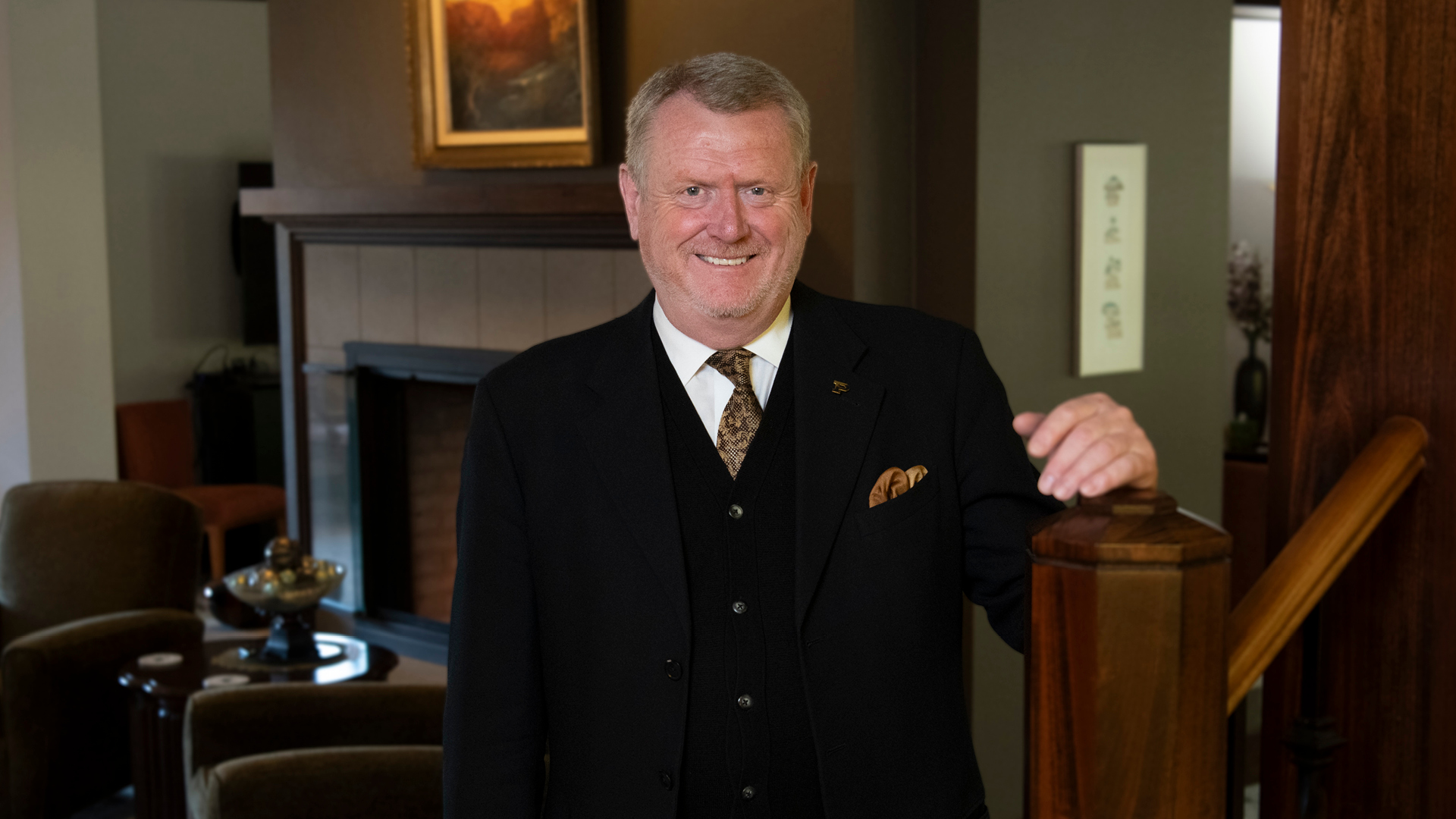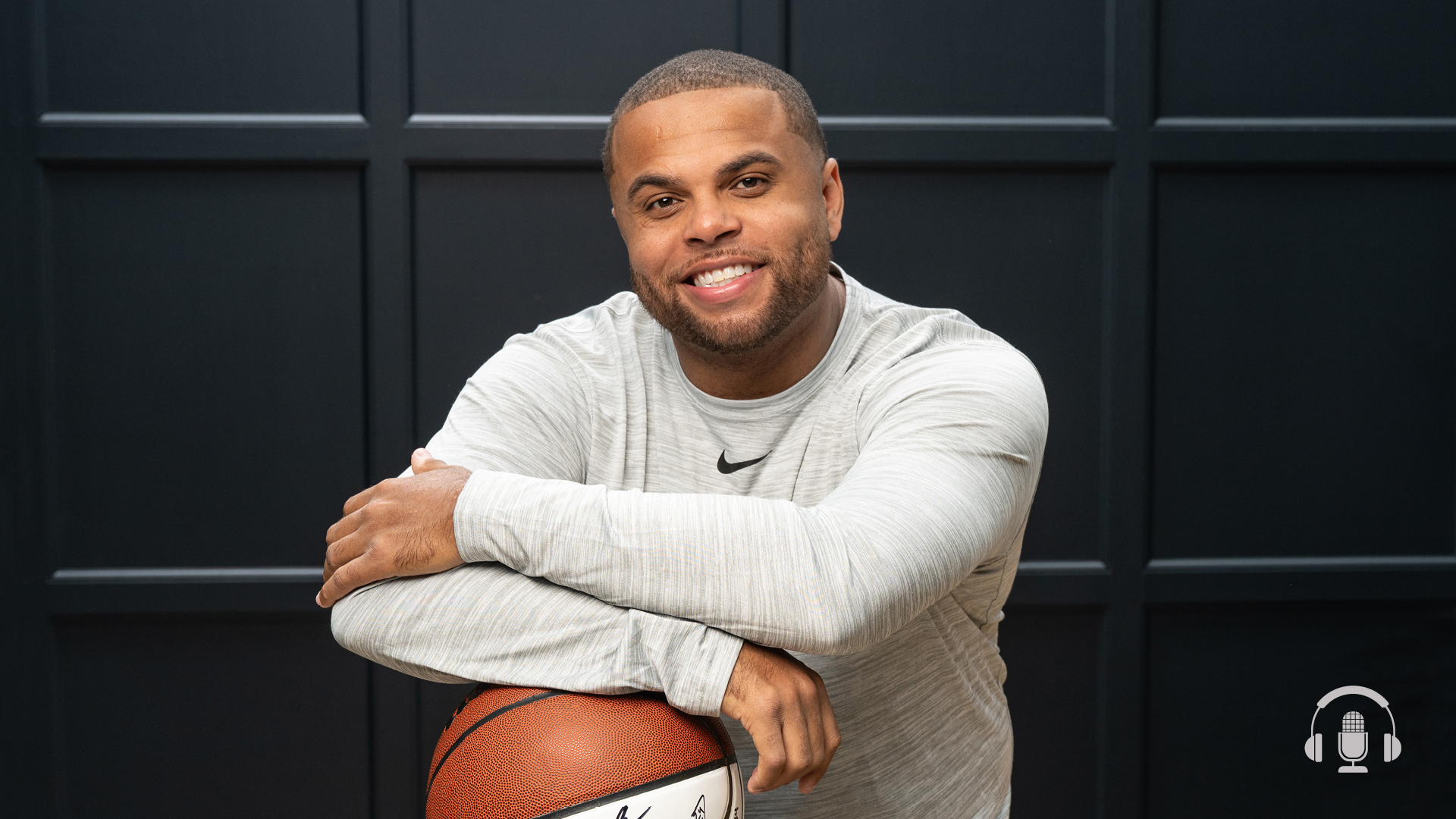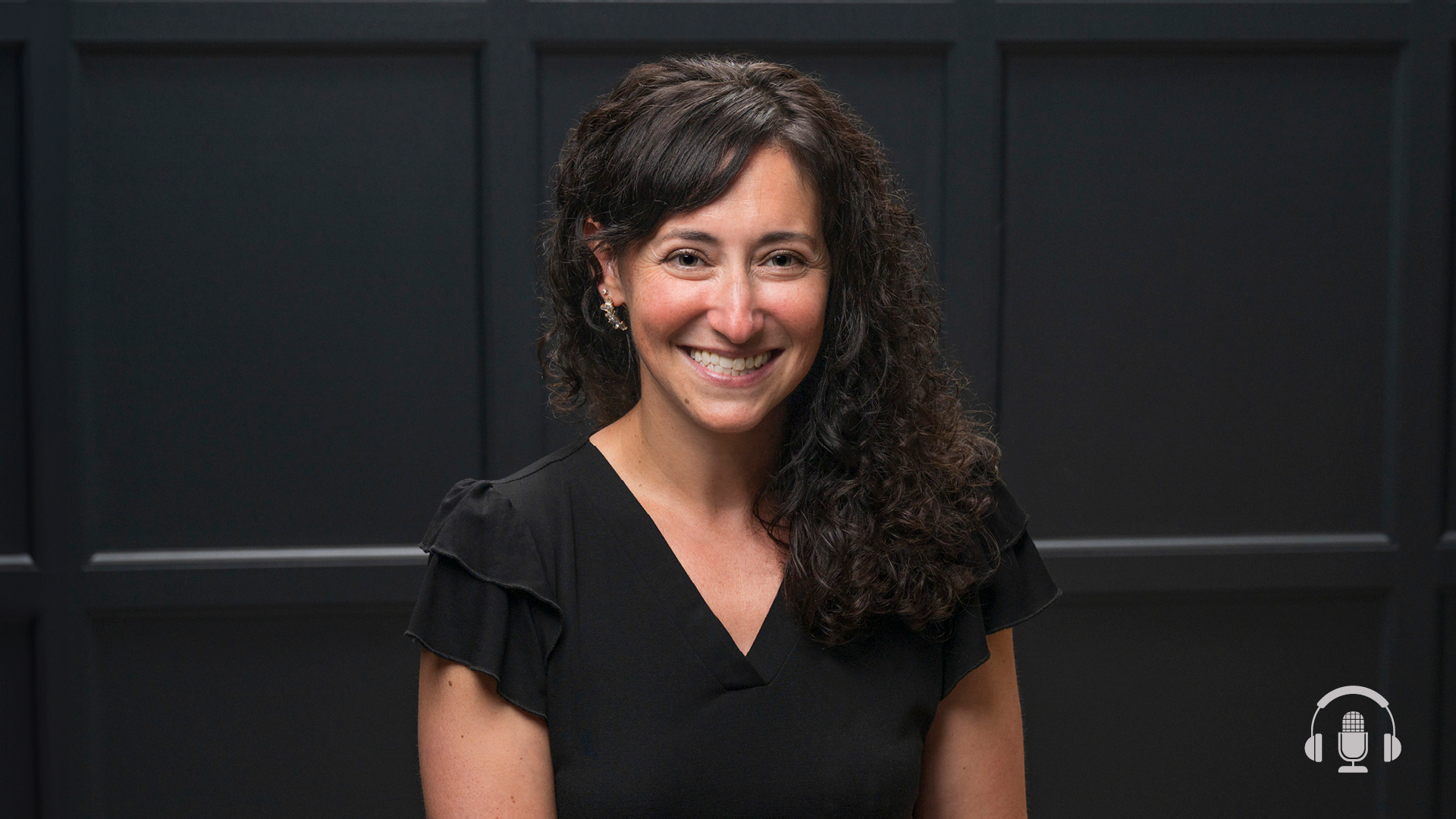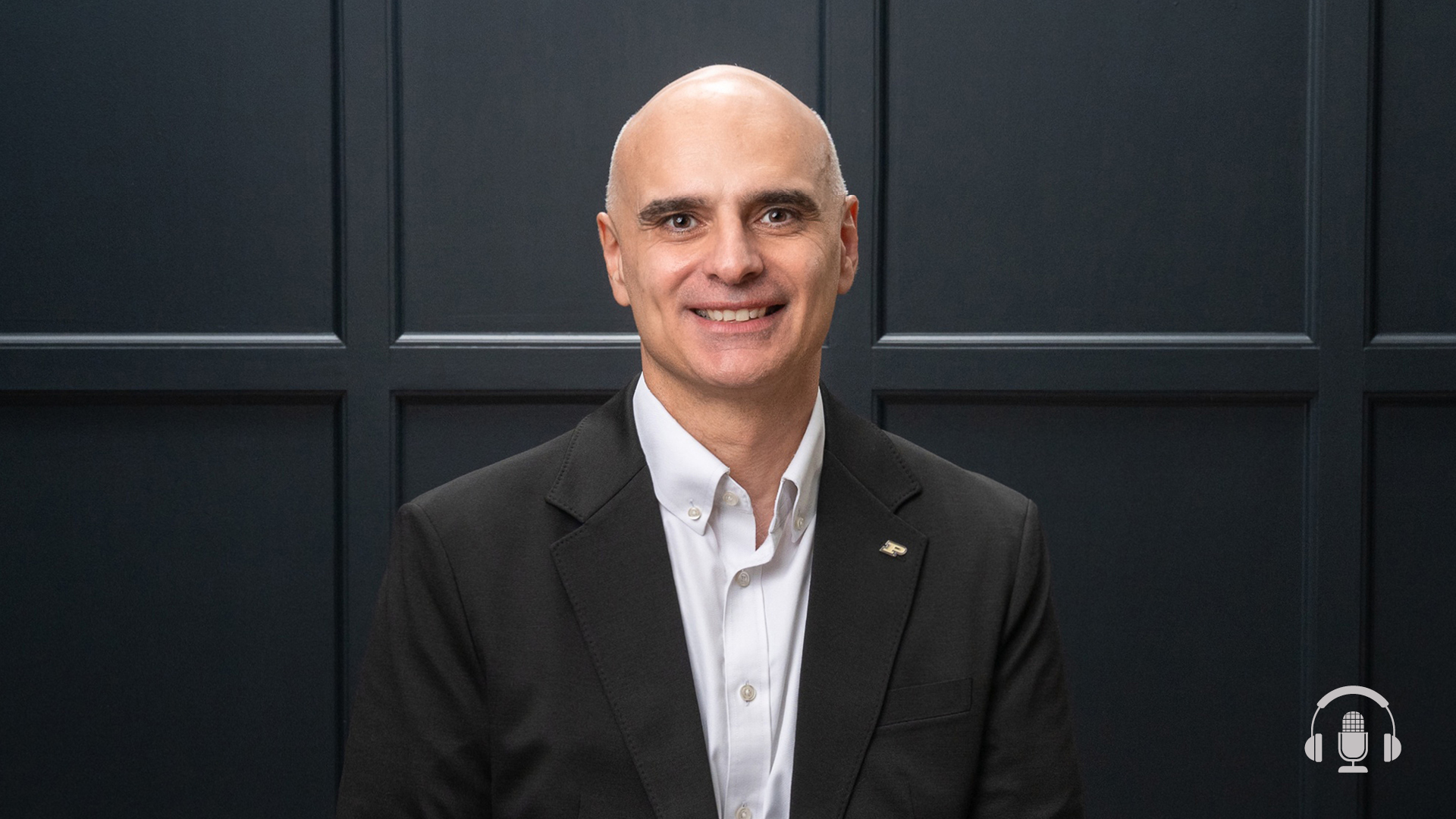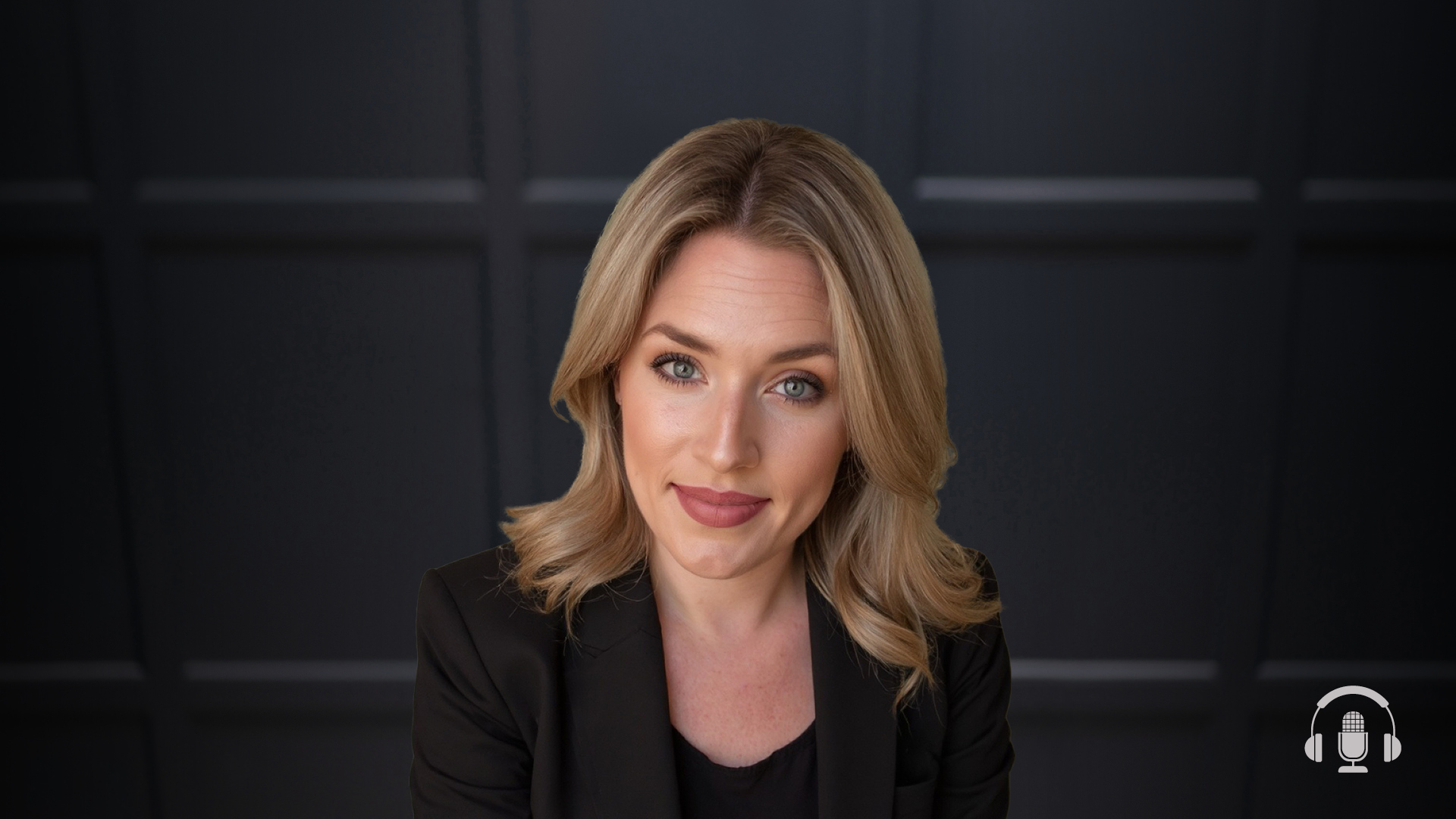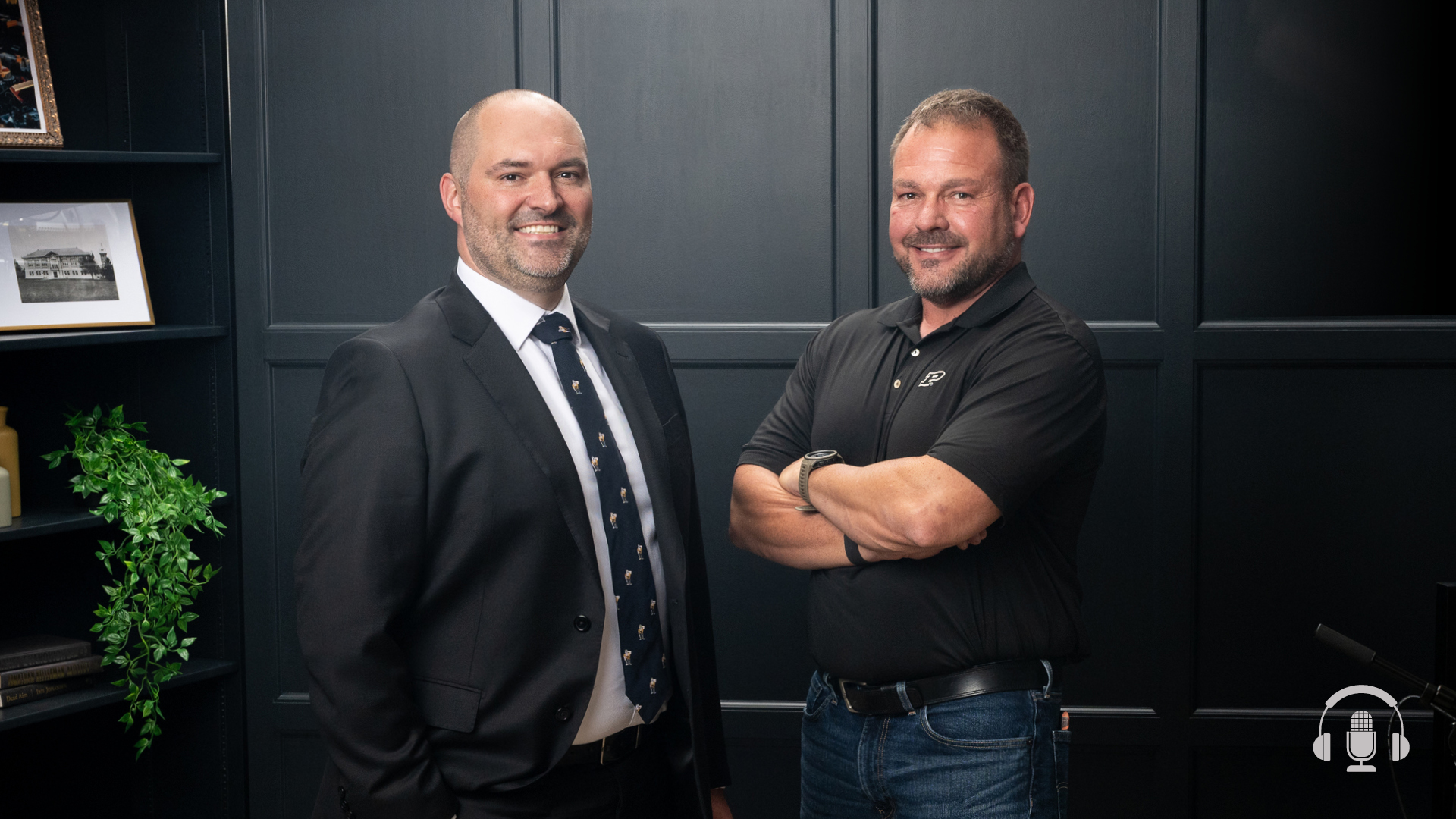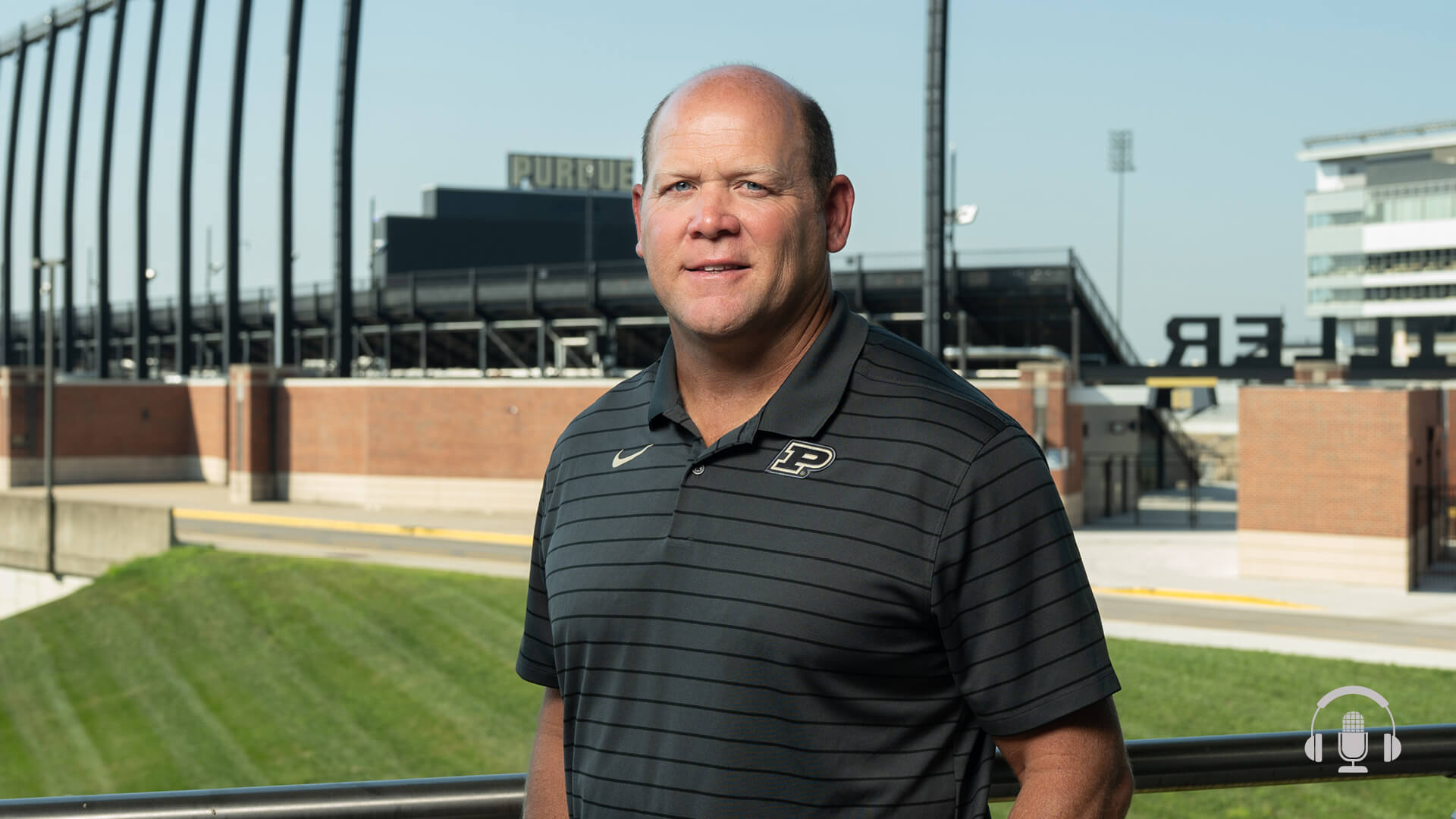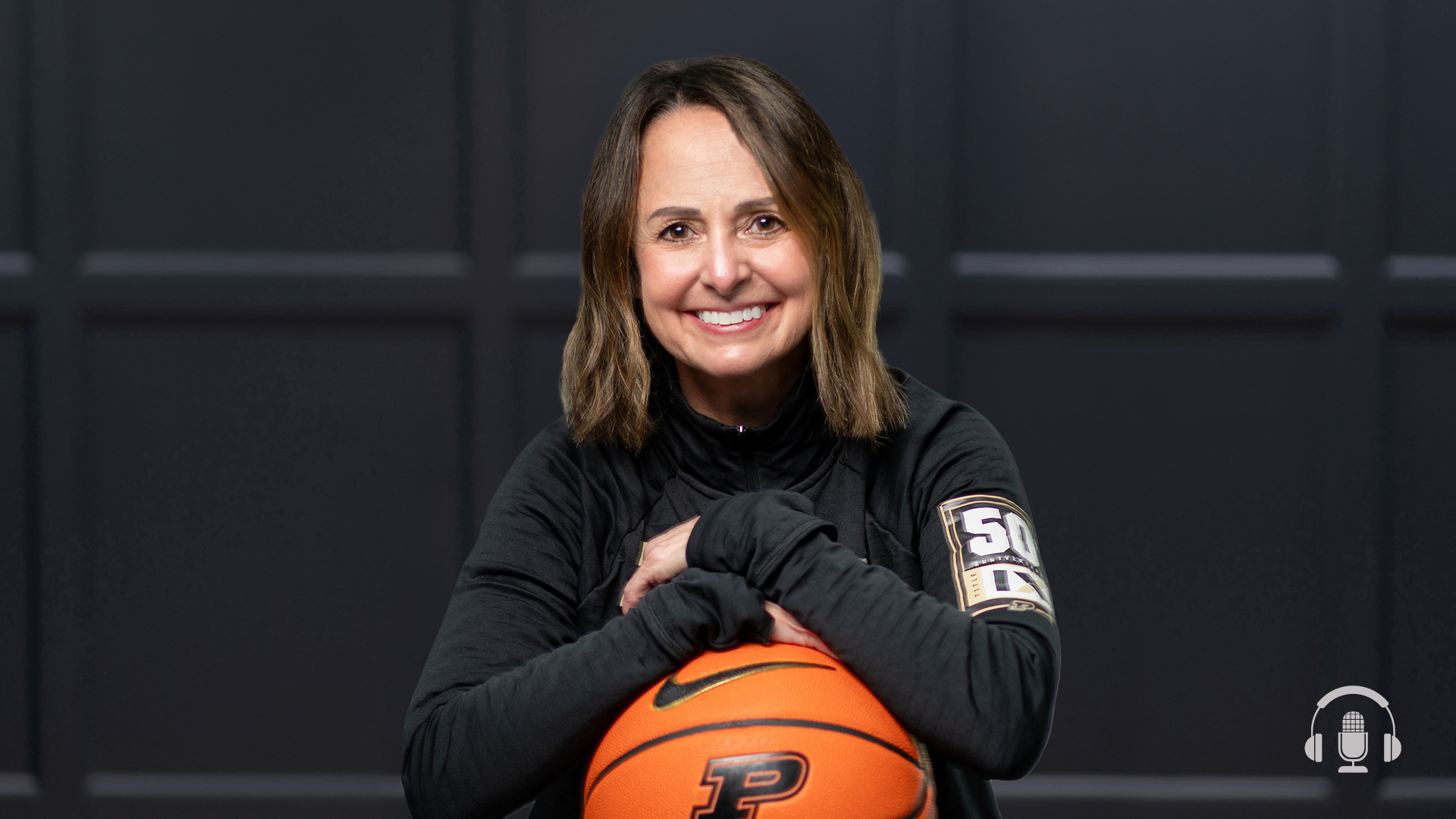Podcast Ep. 129: Purdue President Mung Chiang Talks Pharma Innovation and AI at Fast Company Panel During SXSW
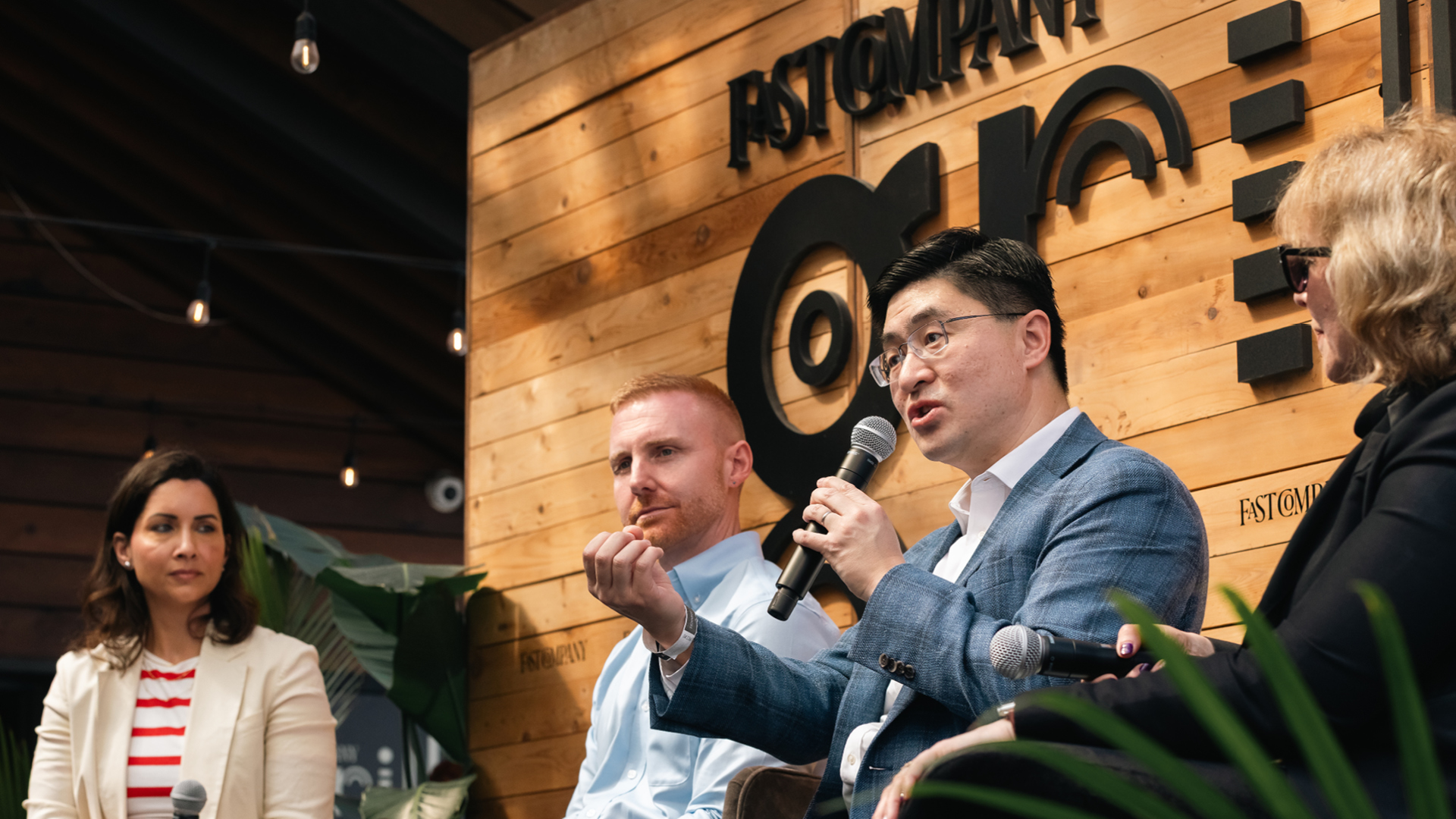
In this episode of “This Is Purdue,” we’re featuring the live Brands That Matter panel spotlighted at the Fast Company Grill during the annual SXSW Conference and Festivals in Austin, Texas.
Purdue President Mung Chiang took the stage as a panelist for “Innovating What Matters: Driving Pharma Forward,” along with Sean Bruich, senior vice president of artificial intelligence and data at Amgen, and Tatyana Kanzaveli, chief operating officer of Open Health Network.
This special panel discussion was sponsored by Purdue University — a four-time recipient of Fast Company’s Brands That Matter distinction.
In this special recording moderated by Shibani Joshi, you will:
- Learn about how the health care industry is using AI to improve the development and distribution of pharmaceuticals
- Discover how Purdue and other pharmaceutical companies are leveraging cross-industry partnerships to drive innovation
- Get to know how Purdue’s partnership with Eli Lilly and Company and Merck & Co. Inc. is driving opportunities in America’s Hard-Tech Corridor
- Find out how technological advancements, including AI and research happening at Purdue, will shape the future of pharma
Don’t miss this special live episode that brought together pharmaceutical industry experts at one of the nation’s most esteemed festivals and conferences — SXSW.
- Learn more about Purdue University at SXSW
- Learn more about Purdue University as a Fast Company Brand That Matters
- Learn more about how AI is transforming the pharma product pipeline from Fast Company
- Learn more about One Health
- Learn more about the Purdue and Eli Lilly and Company collaboration
- Learn more about the College of Pharmacy
- Learn more about Fast Company
- Learn more about SXSW
Podcast Transcript
Mung Chiang:
Hello, this is Mung, president of Purdue University.
Kate Young:
And I’m Kate Young, host of the This Is Purdue podcast. We are here at the Fast Company Grill at South by Southwest, and we’re talking innovating what matters and driving pharma forward.
Mung Chiang:
Join us and Boiler up!
Kate Young:
Hi, I’m Kate Young, and you’re listening to This Is Purdue, the official podcast for Purdue University. As a Purdue alum and Indiana native, I know firsthand about the family of students and professors who are in it together, persistently pursuing and relentlessly rethinking. Who are the next game changers, difference makers, ceiling breakers, innovators? Who are these Boilermakers? Join me as we feature students, faculty, and alumni taking small steps towards their giant leaps and inspiring others to do the same.
Mung Chiang:
Purdue has an industry-university collaboration. Because it’s the pharmaceutical industry and university talent pipeline research innovation together that has been defining the past decades and will continue to define the future ones.
Kate Young:
In this special episode of This Is Purdue, we are featuring the live Brands That Matter panel spotlighted at the Fast Company Grill during the annual South by Southwest Conference and Festivals in Austin, Texas. South by Southwest is one of the world’s biggest festivals, bringing together innovators, creatives, and industry leaders, and our Purdue brand studio team was so excited to be there for this on-location episode in partnership with Fast Company.
Now, for this episode, I handed off my host microphone to moderator Shibani Joshi as Purdue president Mung Chiang took the stage as a panelist at the Fast Company Grill in the panel titled Innovating What Matters: Driving Pharma Forward. But first, a little bit of background. How exactly did Purdue end up on this global stage at South by Southwest? Well, for the fourth consecutive year, Purdue University was named to Fast Company’s Brands That Matter annual list. This distinction recognizes organizations for their ability to convey their brand, perform their mission, and advance their ideals with intention and authenticity, and Purdue stands proudly as the only university to make the list.
Purdue has also emerged as a global leader in pharmaceutical and biotech innovation, collaborating with corporate leaders and pharma partners to tackle critical issues facing the industry. Plus, pharmaceutical manufacturing is a key component of Purdue’s One Health initiative, which advances knowledge and innovation related to animal, human, and environmental health and well-being through novel interdisciplinary research and industry partnerships. So naturally, President Chang was a perfect fit to discuss pharma innovation as part of this panel.
Now, remember, this is audio directly from the live panel, so it’s going to sound a little bit different from our other podcast episodes. This Is Purdue is proud to share Purdue’s giant leaps in the future of pharma, cross-industry partnerships, and the importance of forging meaningful connections with our audiences. Let’s get to it. Here’s Shibani kicking off the panel.
Shibani Joshi:
Good morning, and welcome to what I think is going to be a great conversation and a great morning. We are going to talk about the importance of cross-industry partnerships, particularly in the pharmaceutical industry, which is facing a crossroads these days with advances in technology, the need for sustainable solutions, as well as the opportunity to reimagine how we develop and deliver drugs in the marketplace.
One of the bold ideas that we are seeing play out in industry around this is cross-industry partnerships, and that’s something that’s happening with all of our guests here today, and they’re talking about how they’re using cross-industry partnerships to advance their priorities and their strategy. I’d like to introduce our panel as we kick things off. Sean Bruich is the senior vice president of AI and Data at Amgen, President Mung Chiang of Purdue University… All right, in the house.
Mung Chiang:
Boiler up!
Shibani Joshi:
… Tatyana Kanzaveli, the CEO of Open Health Network. But before we jump in, I’d like to thank our partner, Purdue University, for making this conversation happen.
And I want to start off this morning by taking a big picture kind of approach. There’s a lot of hype and promise around AI, right? Everybody’s doing AI in almost every single industry, but I’d love to hear from you particularly, how are you thinking about AI, prioritizing it, thinking about the pain points that need to come first within your specific organizations? And I’d like to start with you, Sean.
Sean Bruich:
Great. Well, thanks so much for having me. Everybody, it’s great to meet you. If you don’t know Amgen, Amgen’s one of the largest biotechnology companies in the United States. They make a whole host of medicines that serve areas of great unmet medical need. And I joined about six months ago to lead the AI and Data team, as you mentioned.
We’re focused really on two zones. The first is around drug discovery and using AI and machine learning tools to augment the incredible work of our scientists to find new opportunities to treat disease, and then the second is to move faster in bringing these medicines to market. And that’s a more classic kind of approach to machine learning and AI around reducing cycle times, improving supply chain efficiency, improving manufacturing efficiency. So those are the two big zones that I’ve been focused on since I joined.
Shibani Joshi:
Terrific. President Chiang.
Mung Chiang:
Well, good morning, everyone. First of all, Purdue is very proud to be part of Fast Company Grill here. We’re getting grilled, I guess, right now. Why is it so hot here in winter? And great to be at South by. Purdue is proud to be a Brand That Matters for four years in a row now, and we are a brand that talks about excellence at scale, so 58,000 students on main campus, top 10 public university in the United States. We’re proud to be creating jobs and workforce at the same time along with innovation.
So on AI for pharmaceutical industry, you can think of drug discovery, and then think about drug manufacturing and storage and transportation. On both fronts, AI can play a transformational role. Drug discovery front, you’ve got computational power coupled with the domain expertise on the data and on the manufacturing front. So Purdue created two years ago the Bill and Sherry Young Institute for Pharmaceutical Manufacturing Innovation, named after a legendary Boilermaker in the pharma industry, Bill Young. And we’re looking at how AI can enable deep automation in order to create a whole new set of manufacturing capabilities, both small molecules and biologics. So there’s huge transformational potential and we need to have the university industry working together, just like Bill Young Institute now working with Eli Lilly and Company and Merck in a consortium.
Shibani Joshi:
Tatyana?
Tatyana Kanzaveli:
Hi, thank you for having me here. And I’m a founder and CEO of Open Health Network. We started the company as AI in health care from day one. As soon as gen AI came around, we started deploying gen AI. And specifically related to pharma, we developed clinical trial protocol generation tool that automatically creates clinical trial protocols that reduces time from months and almost years to a few weeks. We also use gen AI for behavioral interventions, which is extremely important in clinical trials that adherence is low, so how you motivate people to do that. And the other area that is important for diversity in clinical trials is having representative data sets, so we build gen AI engine that generates synthetic data to complement real data to make sure we have representative data sets. Honored to be on the panel with you guys.
Shibani Joshi:
Let’s dig into this cross-industry partnership idea. President Chiang, I know this is something that has been a strategic imperative at Purdue across many industries, not just pharma. Tell us a little bit about what your collaboration looks like and what are the pain points of industry that this partnership is able to solve. For example, a skilled workforce, that’s a critical issue for the development and the future of pharma, but what else can come about from something like this?
Mung Chiang:
Yeah, I’ll give you two concrete examples. First is that we have a initiative called One Health at Purdue, human, animal, plant health working together. And we have a great partner called Elanco. It is the second largest in the world in animal vaccine. So we’re creating a One Health Innovation District in Indianapolis, where Purdue is opening an urban campus.
Another example is Lilly Company. So Eli Lilly has been working with Purdue over the past several years on a $142 million project. $100 million is for research, $42 million is for scholarships, the Lilly Scholars, and workforce development, and internship with Lilly. Now, Lilly is building also a $13 billion huge manufacturing site right in between West Lafayette, north end, and Indy south end of Purdue’s main campus. So we call this America’s Hard-Tech Corridor, microelectronics, transportation, aerospace industry, and pharmaceutical industry. So right there, $13 billion in between the 65-mile-long corridor, we have this huge site. And Purdue is working with Lilly in a pharmaceutical manufacturing training facility to train the workforce of the future going into this AI-driven Industry 4.0.
So if you look at those two examples, One Health Innovation District, downtown Indianapolis, Elanco, pharmaceutical-driven training facility, and a huge onshoring opportunity, onshoring back to our own country, back to the heartland, and then you tie it together with Purdue’s original main campus half an hour to the north, that densifies in a curated manner this pharmaceutical revolution happening in America’s heartland.
Shibani Joshi:
Yeah, it’s allowing us to deploy and execute ideas and medicines in a much faster way. I want to ask you, Sean, you bring a pretty robust and diverse experience to your role at Amgen. You have worked at Meta, Nike, and other industries. What skills and what trends are you seeing driven through AI across industries that you’re applying now to Amgen?
Sean Bruich:
When you look at the opportunity in front of us, as President Chiang mentioned, we are just at the beginning of when some of these brand new computational approaches are demonstrating real impact in biotech and biopharma. The Nobel Prize this year went to Professor David Baker at the University of Washington, but also to two Google DeepMind employees for an algorithm they developed that predicts protein folding. That is incredibly exciting, and there are going to be some huge changes, I think, in how we do science, the drug discovery part of what Amgen does, what the broader biotechnology field does. That being said, I think data is data and algorithms are algorithms, and so there are some real lessons learned from the transformation of the digital advertising industry or the transformation of direct-to-consumer retail that are incredibly applicable to companies like Amgen and biot-
Shibani Joshi:
But name a couple of those. What do you think?
Sean Bruich:
Yeah, look, you think about Nike going from being a wholesale manufacturer that ships 10 million shoes to Footlocker to having to deliver individual boxes of shoes to consumers. That sort of approach to digitizing operations, to automation, to data-driven decision-making absolutely are going to be able to be applied into the biotech and biopharma space. And there’s real benefit to moving faster at each stage of the drug delivery process, because that means you’re getting medicines to patients who have unmet medical need a lot faster.
So I think both sides of that coin are really exciting. I think there’s going to be some real novel opportunities for data science to change how we do drug discovery and how scientists do their job, but just in terms of improving how drug companies operate, that’s also a big opportunity and there’s a lot to learn there.
Shibani Joshi:
Tatyana, I’d love to bring your perspective on this as you’ve been using AI and data analytics for a very long time. You don’t think that AI is on the brink, it’s here and it’s been here. What are you using AI for? How is it informing and accelerating what you’re doing?
Tatyana Kanzaveli:
If you think about overall health care, it’s all about data and massive amounts of multidimensional data sets. We’ve been using it for supporting researchers in many different diseases, because you need to analyze data that comes from different sponsors, from humans, from environment, from EHR, to make sense and understand causation, personal treatment, and outcomes.
In regards to pharma, I had a panel yesterday where I had CEO of Insilico, and he showed me a bottle, everything that has been developed using gen AI. So they were able to define targets and move into phase two of clinical trials, completely AI-powered drug discovery and production. This is the future that can bring us precision medicine and will be able to introduce drugs faster, which means that we’ll be able to treat, and cheaper. So we will be able to produce drugs that will treat people who right now probably don’t have anything and save lives. So it’s exciting times.
Shibani Joshi:
The promise is real, but the road to the promise is uncertain, bumpy, lots of issues, regulation, many different players, many different possibilities. What do you think the pain points are or the roadblocks that each of you are seeing that cross-industry partnerships can help or where you’re putting more of your effort internally to smooth out?
Sean Bruich:
Transformation is always really hard. I think at the heart of this AI revolution, it’s a different way of thinking about your data assets, if you’re a company, and a different way of thinking about what are the partners that are going to matter to you going forward. So on the data side of things, there’s so much that scientists do today that’s not yet been digitized, so much that’s manual, so much that’s not really even captured or addressable to AI systems. And that, across the industry, whether you’re a small biotech company and a huge university, a large drug company, that’s going to be step number one to making any of this actually tie out together. If you don’t have the right data, it’s not been digitized, there’s nothing your AI systems can do about it.
So that’s going to be a huge area of investment, but it’s also going to require a lot of these companies that have traditionally thought of themselves as purely a scientific enterprise as much more of a technology-driven success story. Whether you’re a small biotech company with your university, whether you’re a corporation, your underlying technology staff, the partnership with AI and other large technology companies, suddenly those become almost as important as the scientific enterprise. Which is not to diminish the criticality of genius scientists or the scientific discovery process, but augmenting scientists with automation, with technology, with prediction tools is going to be a huge exercise in inventing new ways of doing the same work more efficiently.
Shibani Joshi:
President Chiang, I see you nodding your head?
Mung Chiang:
Well, because I’m in agreement with Sean here. And maybe I’ll just add several other challenges we’re facing, one of which is AI is like a generalist. You’ve got large language models, you’ve got generative AI algorithms, but the hammer got to be specialized. You need a specialist in each vertical domains to work alongside the generalist. So for example, in drug discovery, Purdue has a fantastic professor, one of many we have, his name is Phil Low. He’s got 600 US patents, dozens of drugs, eight startup companies, including the cancer drug Pluvicto, for example. And I asked him, and he said, “Yeah, it’s great with AI and it let’s have the right access to data, and so on. But the space for AI, even today’s AI, to search is so huge, you still need the domain expertise to work together in a drug discovery phase.”
A second example is the manufacturing part. If you look at a manufacturing floor, there’s a lot of physical objects. It’s not just the virtual side of the data and computation. So that’s why Purdue has an Institute for Physical AI, where the bytes of AI meet the atoms of what we make, what we grow, what we move. In this case, it’s what we make and how we make it. The physical and the virtual interface require a dialogue between the AI experts and the manufacturing experts.
And a third and last example I add to that is if you think about onshoring opportunities as the global supply chain of pharmaceutical industry is reshuffled. So here in our country, and I hope more so in Midwest than in Texas, sorry about that, but I’m biased, we have a lot of opportunities of job creation. But in order to onshore these chemical processing opportunities, you need new chemistry. Not just the virtual side of AI, but also the physical side of, how would you process the chemicals in a way that is compliant with US regulations to onshore it here? So there’s a lot of challenges, but also opportunities, with the clean chemistry side of it too.
Tatyana Kanzaveli:
I am a strong believer in partnerships. And with universities, my company, we try to recruit on a part-time or full-time basis PhDs and students of universities. And I think it’s important, you mentioned that you’re building training facilities to train people to think differently. Those things are changing, so it’s important for universities to step in and prepare students for what’s coming.
Partnership with industry, for us, startups is crucial. We can’t just build things without partners. In my case, we partner with government, we partner with providers and pharma, and jointly we can deliver value. The advantage of startups is that we can attract and we can move fast. We have a capacity to immediately make significant changes in the way we do things that kind of big companies have processes, procedures, management, it’s more difficult for them to do those things. So we can run experiments, iterate, and innovate together with academia and public companies.
Shibani Joshi:
That’s great, but we’re also facing uncertain times for academic institutions with research funding and NIH funding at risk, President Chiang. It sounds like this is another reason that these industry partnerships are crucial, particularly right now.
Mung Chiang:
Yeah, well, the university president’s job is getting easier and easier every day. It’s becoming very boring. But you are right, we have opportunities. I see this as an opportunity to double down on strength. For example, Purdue has an industry-university collaboration. I mentioned quite a few consortia and great company partners. And if you are one of the pharma companies out there, please, give me a call. I’d love to talk to you. I’d love to recruit you to Purdue’s campus, the America’s Hard-Tech Corridor. And we have great relationship, because it’s the pharmaceutical industry and university talent pipeline research innovation together that has been defining the past decades and will continue to define the future ones.
Shibani Joshi:
As we wrap up here, let’s talk about the future. Lots of promise, lots of complexity, but what is that vision, I guess, each of you are holding in terms of patient care, drug development, or the future of health care that gets you up every morning and gets you motivated to do your work? I’d love to hear what that vision is. I’ll start with you, Sean.
Sean Bruich:
I’m just delighted to have an opportunity to participate in this revolution, where technology, deeper understanding of genetics, deeper understanding of precision medicine, all powered through data and AI, are going to transform the way we do health care in this country and beyond. I think it’s such an exciting time, and I am delighted that folks from different walks of life, whether it’s data scientists, biologists, chemists, physicians, pharmacists, are going to come together and really rethink what’s possible here.
Mung Chiang:
Well, I recently met some students looking at institutes at their new physical facilities. I look at the faces of these undergraduate and graduate students, and they are eager to say, “With creativity, we can save even more lives.” And with our partnership, we can accelerate and amplify that life-saving opportunity in this industry.
Tatyana Kanzaveli:
I started my company when I was diagnosed with cancer. And my vision was to have all this data and the power of AI to figure out why, to figure out how, to save lives, and that basically is a driver. I wake up and I’m excited about new technologies, new partnerships, new ways on how we can impact people’s lives.
Shibani Joshi:
Beautiful way to end, saving people’s lives with specialized approaches. Tatyana, President Chiang, Sean, thank you very much. Thank you to our partner, Purdue University, and thanks to everyone for joining us for this conversation.
Mung Chiang:
Thank you.
Kate Young:
Thanks for joining us for this very special episode of This Is Purdue. Purdue’s overall presence at South by Southwest provided a major platform to amplify Purdue’s renowned reputation while showcasing our thought leadership and global impact across industries. You can watch more behind-the-scenes videos from the Fast Company Grill at South by Southwest on our podcast YouTube page, YouTube.com/@ThisIsPurdue. And, be sure to follow This Is Purdue on Apple Podcasts, Spotify, iHeartRadio, or wherever you get your podcasts.
This Is Purdue is hosted and written by me, Kate Young. Our podcast videography for this episode was led by Alli Chaney, Jon Garcia, and Ted Schellenberger. Our social media marketing is led by Maria Welch. Our podcast distribution strategy is led by Carly Eastman. Our podcast design is led by Cheryl Glotzbach. Our podcast photography for this episode was led by Jon Garcia. Our podcast team project manager is Rain Gu. Our podcast YouTube promotions is managed by Megan Hoskins. Additional writing and research assistance is led by Sophie Ritz and Ashvini Malshe. Our creative production assistant is Dalani Young. And, our This Is Purdue intern is Caroline Keim.
Thanks for listening to This Is Purdue. For more information on this episode, visit our website at purdue.edu/podcast. From there, you can head over to your favorite podcast app to subscribe. And don’t forget, you can also check out all of our podcast content on our podcast YouTube page, youtube.com/@ThisIsPurdue. And as always, Boiler up!
